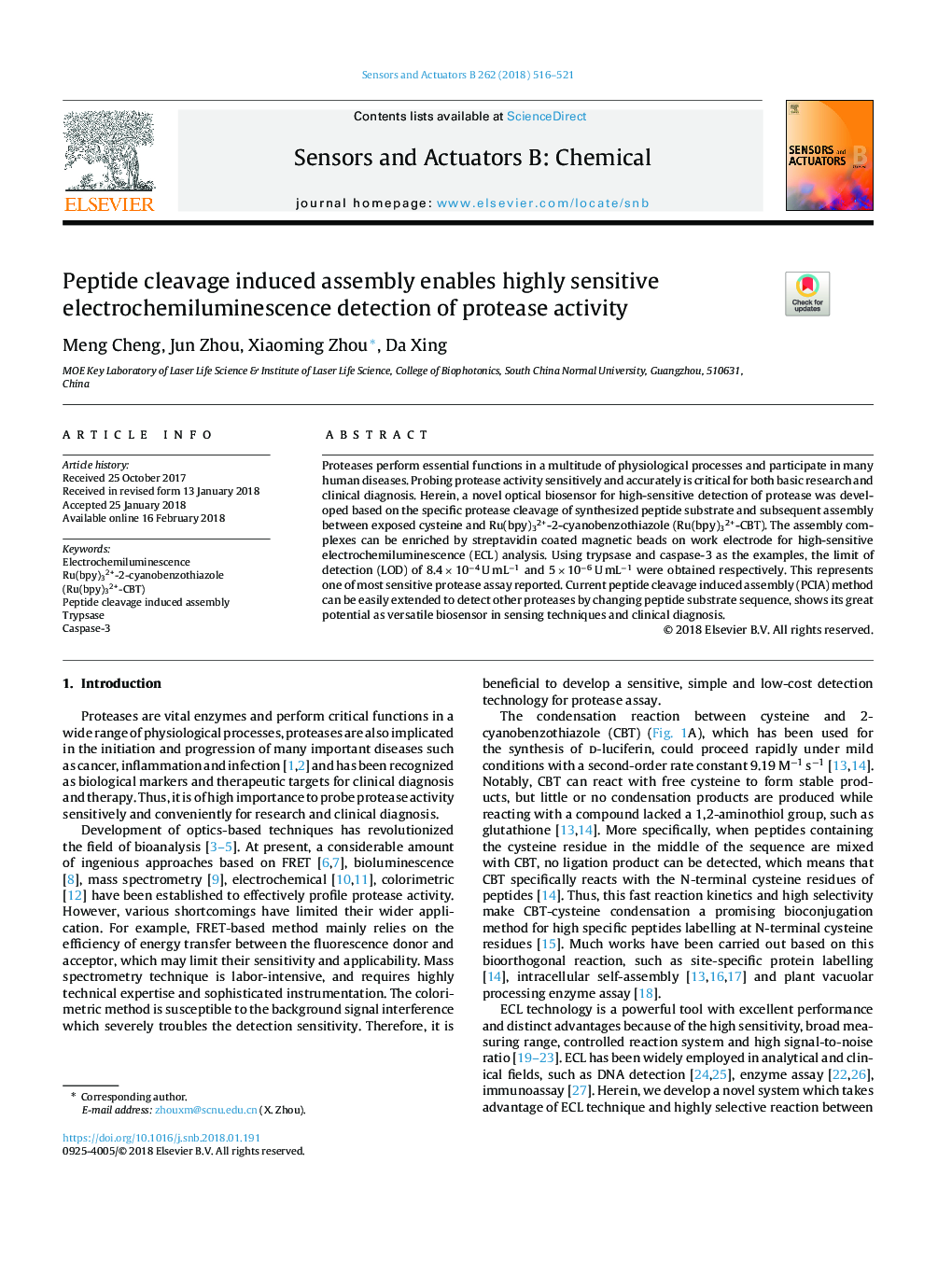| Article ID | Journal | Published Year | Pages | File Type |
|---|---|---|---|---|
| 7140649 | Sensors and Actuators B: Chemical | 2018 | 6 Pages |
Abstract
Proteases perform essential functions in a multitude of physiological processes and participate in many human diseases. Probing protease activity sensitively and accurately is critical for both basic research and clinical diagnosis. Herein, a novel optical biosensor for high-sensitive detection of protease was developed based on the specific protease cleavage of synthesized peptide substrate and subsequent assembly between exposed cysteine and Ru(bpy)32+-2-cyanobenzothiazole (Ru(bpy)32+-CBT). The assembly complexes can be enriched by streptavidin coated magnetic beads on work electrode for high-sensitive electrochemiluminescence (ECL) analysis. Using trypsase and caspase-3 as the examples, the limit of detection (LOD) of 8.4â¯Ãâ¯10â4â¯Uâ¯mLâ1 and 5â¯Ãâ¯10â6â¯Uâ¯mLâ1 were obtained respectively. This represents one of most sensitive protease assay reported. Current peptide cleavage induced assembly (PCIA) method can be easily extended to detect other proteases by changing peptide substrate sequence, shows its great potential as versatile biosensor in sensing techniques and clinical diagnosis.
Keywords
Related Topics
Physical Sciences and Engineering
Chemistry
Analytical Chemistry
Authors
Meng Cheng, Jun Zhou, Xiaoming Zhou, Da Xing,
